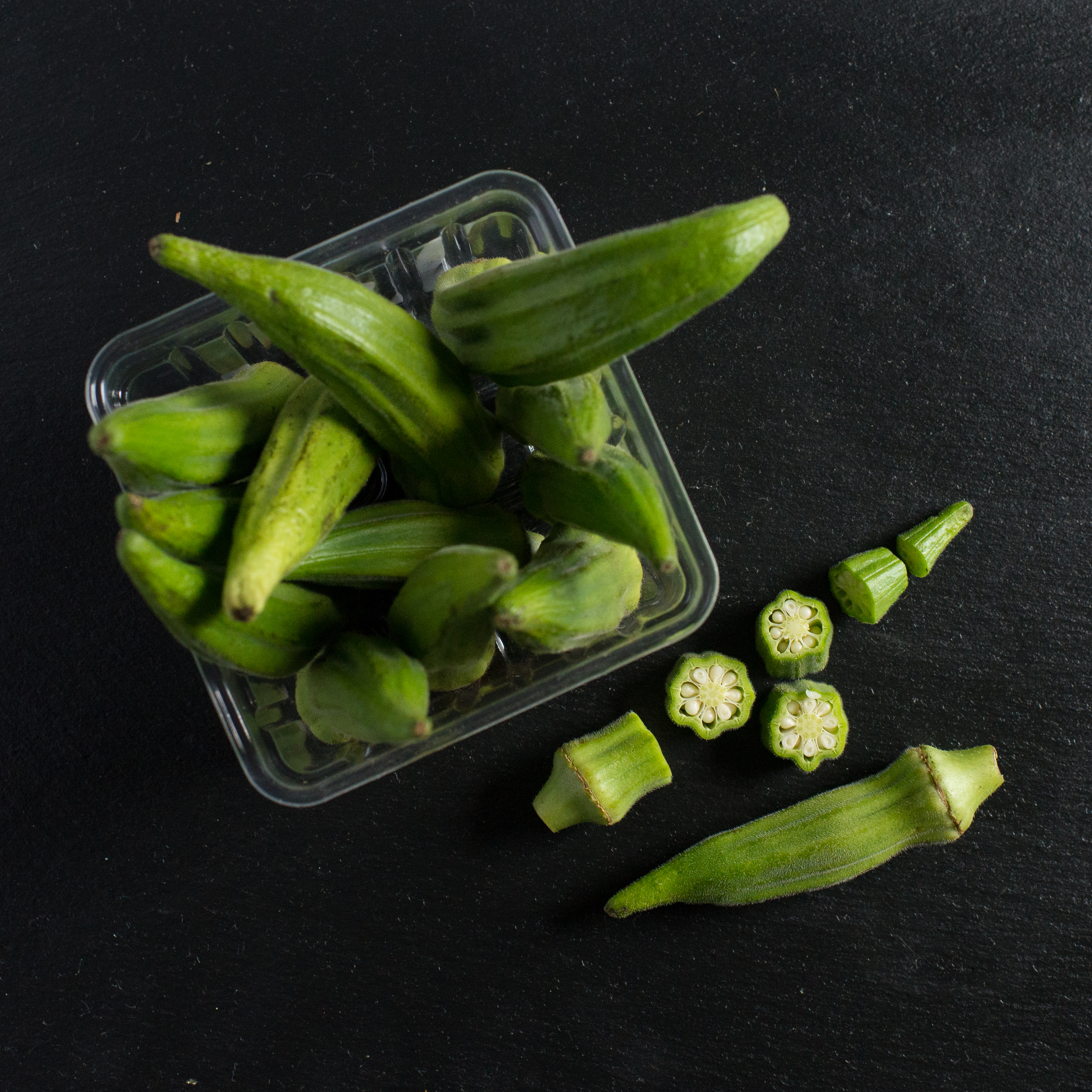okra

Okra is a green, pod-shaped vegetable native to Africa and commonly grown in warm, tropical climates like the Southern U.S., India, and West Africa. Fun fact: Okra has been cultivated for thousands of years and was even used by Egyptians in the 12th century!
Why is it good for my body?
Okra is rich in fiber, vitamin C, and folate, supporting digestion, immune health, and healthy pregnancy. It also contains antioxidants and plant compounds that may help regulate blood sugar levels.
Where does it come from?
Okra originated in Ethiopia and was later brought to the Middle East, India, and eventually the Americas through the transatlantic slave trade. It has deep cultural roots in Southern cooking, African, and Creole cuisines.
What season is it fresh?
Okra is in peak season during the summer and early fall, typically from June through September. It thrives in hot, humid climates and is often found fresh at local markets during these months.
How do I store and handle it?
Store fresh okra unwashed in a paper or plastic bag in the refrigerator for up to 3–4 days. Avoid washing it until you're ready to use it, as excess moisture can cause it to spoil faster.
What are ways to eat it?
Okra can be eaten raw in salads, roasted for a crispy texture, sautéed, or added to stews like gumbo where its natural thickening properties shine. For less slimy texture, try grilling, roasting, or quick sautéing—these are also among the healthiest ways to prepare it.
How do I introduce it to first-time tasters?
Start by roasting or air frying okra with olive oil and seasoning for a crisp, mild intro to its flavor. You can also slice it thin and add to soups or stir-fries, or pair it with tomatoes and spices to mask its unique texture while still enjoying the taste.
Found in the Produce section
Recipes
https://recipes.doctoryum.org/es/foods/okra
